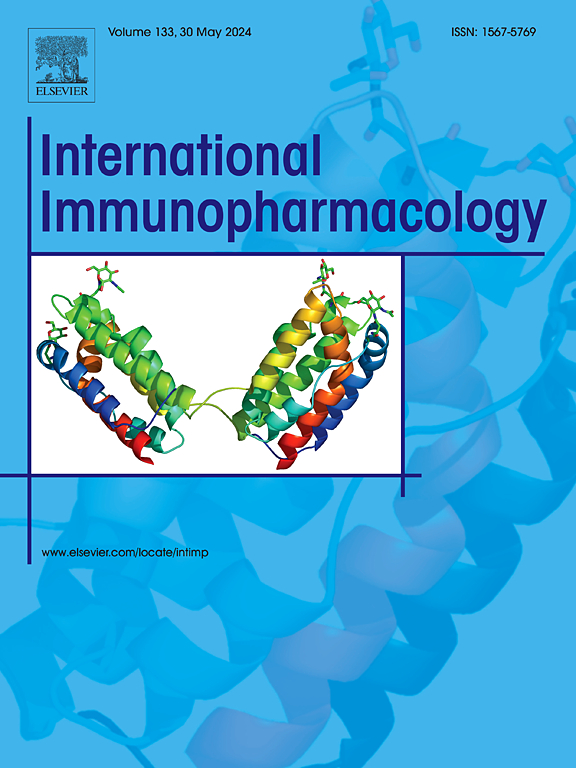Efficacy and safety of telitacicept in patients with class III–V lupus nephritis: A real-world retrospective cohort study
IF 4.8
2区 医学
Q2 IMMUNOLOGY
引用次数: 0
Abstract
Objectives
This retrospective cohort study evaluated the efficacy and safety of telitacicept combined with standard therapy in class III–V lupus nephritis (LN).
Methods
We enrolled 146 patients with lupus nephritis confirmed by renal biopsy. Among them, 73 patients received treatment with telitacicept in combination with the standard therapy regimen, while the remainder were treated with the standard therapy alone. This analysis included class III/IV ± V or class V LN. Efficacy endpoints included cumulative complete renal response (CRR, 24hUTP < 0.5 g with stable renal function) and partial renal response (PRR, 50 % reduction in 24hUTP from baseline) at 6 months, 1 year, and the end of follow-up. Multivariate regression was used to assess baseline predictors of CRR. Safety was also evaluated.
Results
Compared with the control group, telitacicept showed remarkable efficacy in improving disease activity indicators such as serum albumin (ALB), complement levels, and 24-h urinary total protein (24hUTP), with a significant reduction in antibody positivity rates and immunoglobulin levels, alongside an improvement in anemia. By 6 months, the CRR rate in the telitacicept group reached 64.4 % (64.4 % vs 45.2 %, P = 0.020). At 1 year, the cumulative CRR was significantly higher in the telitacicept group compared to the control group (80.8 % vs 61.6 %; P = 0.010). During follow-up, the time to achieve CRR was significantly earlier in the telitacicept group (median 4.0 months, 95 %CI, 2.71–5.29) than in the control group (median 9.0 months, 95 %CI, 5.25–12.75) (LogRank P = 0.006). Moreover, subgroup analyses indicated better efficacy of telitacicept in patients with positive dsDNA antibodies (OR, 1.70, 95 %CI, 1.20–2.40, P for interaction = 0.031). Telitacicept dose reduction did not increase disease activity. Multivariate analysis showed that the use of telitacicept was a favorable factor for achieving CRR, and other predictors included BMI, eGFR, and 24hUTP. Compared with the standard treatment group, the risk of adverse renal outcome events in the telitacicept group was reduced by 53 %. The incidence of adverse events was similar between the two groups.
Conclusions
This real-event study confirmed that the addition of telitacicept to standard therapy significantly boosted clinical remission rates and improved prognosis in patients with LN. It was also found that telitacicept may be more likely to achieve CRR in dsDNA antibody-positive patients. At baseline, the use of telitacicept, lower BMI and 24hUTP levels, and higher eGFR levels were associated with a greater likelihood of achieving CRR. In addition, for patients who achieve CRR and SLEDAI score ≤ 6, we advocate dose reduction of telitacicept after 6 months of treatment.
求助全文
约1分钟内获得全文
求助全文
来源期刊
CiteScore
8.40
自引率
3.60%
发文量
935
审稿时长
53 days
期刊介绍:
International Immunopharmacology is the primary vehicle for the publication of original research papers pertinent to the overlapping areas of immunology, pharmacology, cytokine biology, immunotherapy, immunopathology and immunotoxicology. Review articles that encompass these subjects are also welcome.
The subject material appropriate for submission includes:
• Clinical studies employing immunotherapy of any type including the use of: bacterial and chemical agents; thymic hormones, interferon, lymphokines, etc., in transplantation and diseases such as cancer, immunodeficiency, chronic infection and allergic, inflammatory or autoimmune disorders.
• Studies on the mechanisms of action of these agents for specific parameters of immune competence as well as the overall clinical state.
• Pre-clinical animal studies and in vitro studies on mechanisms of action with immunopotentiators, immunomodulators, immunoadjuvants and other pharmacological agents active on cells participating in immune or allergic responses.
• Pharmacological compounds, microbial products and toxicological agents that affect the lymphoid system, and their mechanisms of action.
• Agents that activate genes or modify transcription and translation within the immune response.
• Substances activated, generated, or released through immunologic or related pathways that are pharmacologically active.
• Production, function and regulation of cytokines and their receptors.
• Classical pharmacological studies on the effects of chemokines and bioactive factors released during immunological reactions.

 求助内容:
求助内容: 应助结果提醒方式:
应助结果提醒方式:


